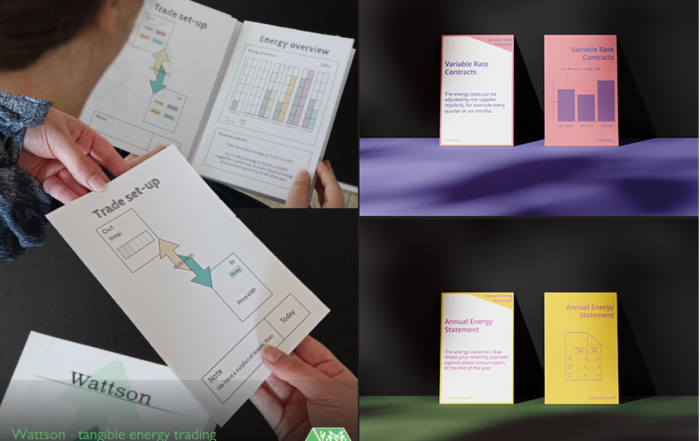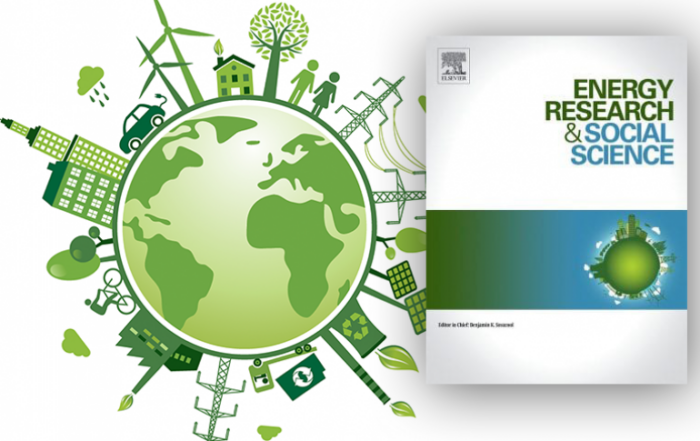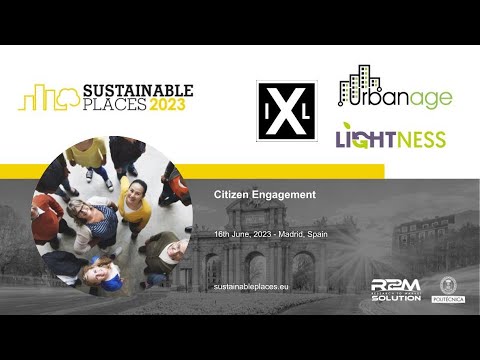On January 19th, 2023 during the event “Energy poverty tackled!?”, organized by the EnergyMeasures and ENPOR project, Sylvia spoke about the role of energy cooperatives in tackling energy poverty.
She shared experiences from an earlier workshop (Nov. 17, 2022) organized by DuneWorks, Het PON-Telos and Gemeente Eindhoven, from the EnergyMeasures Project. That workshop focused on the question: ‘How can you as an energy cooperative develop a collective solar roof (or other generation facility), or design your existing energy project in such a way that you can use the revenues to contribute to addressing energy poverty in your neighborhood?’ This was done through sharing experiences (from several energy cooperatives, as well as an official from a municipality and province and an employee of an Energy Bank) and the joint completion of various types of the Business Model Canvas.
Sylvia opened the session by highlighting the importance of energy cooperatives in addressing energy poverty, and gave an example from Scotland where the revenues of a community wind farm are directly used to improve the situation of households in energy poverty. In Belgium and the Netherlands we also see energy cooperatives showing increasing interest in addressing energy vulnerability and energy poverty. However, this does require a different approach than we are used to.
We have about 700 energy cooperatives in the Netherlands – a good basis, a local movement that could be broader and more inclusive to include people and organizations in a situation of e-poverty or vulnerability. So that the benefits of the energy transition also reach them.
Three models for cooperatives that want to help tackle energy poverty can be distinguished on the basis of practical experiences to date:
- Model existing cooperatives that use their (increased) income to tackle energy poverty together with the municipality (Deltawind; Bossche Windmill West)
- Local model: for example, a collective solar roof where the investment is brought in from outside, and the revenues are used to alleviate energy poverty (examples: EnergieFabriek Tilburg (Kempenbaan project); Zon op Kattenburg II (Amsterdam)
- Service model: a supra-local cooperative provides services to model 2, with the condition that the proceeds are used to address energy poverty. Energie van Rotterdam; Robin Doet/GOED/Zon op alle Daken are examples of this.
All these models focus on multiple value creation. The collaboration where an umbrella cooperative with expertise (from model 3) facilitates smaller local initiatives (model 2) is a way to partially overcome the deficits local initiatives struggle with such as lack of time, manpower, money and access to parties. Joining forces in short is what makes the combination of these cooperatives powerful.
But more is needed, such as good cooperation with the municipality. The municipality can make municipal property (roofs) available and use the revenues from the developed collective solar roofs for various social projects. In time, energy cooperatives hope for improved opportunities to supply their own power to residents in order to reduce dependence on power prices (just as is now done with heat networks on a small scale cooperatively). The idea is that transparency and a non-commercial approach helps ensure a fair price.
These are longer-term strategies and models to address energy poverty. And this presentation has shown that there are ways to organize energy supply differently locally, with actual greater involvement of citizens in energy communities. The local base includes not only existing energy cooperatives, but also municipalities, CoEs, other local initiatives and local entrepreneurs.
The EU talks about “energy communities” – as vehicles to give citizens a greater role in that energy transition, which is necessary because the energy transition is a societal transition. Here lies a powerful basis for a more inclusive and equitable energy transition.
What is needed is policy recognition of this potential of energy cooperatives. Because models 2 and 3 are relatively new and exist not because of but rather despite of current laws and regulations. The current subsidy climate for collective citizen projects assumes pre-investment by residents – a model of individual investors and individual payback periods and individual benefit (no solidarity). Despite these assumptions, these new initiatives are trying to implement collective projects that do not rely on the individualistic model. To make this possible, cooperation with municipalities, access to financing (think financial institutions) for the pre-investment, and a stable support policy that provides longer-term planning security are indispensable.
The presentations of the other sub-sessions of the ENPOR meeting (in Dutch) can be found here.


